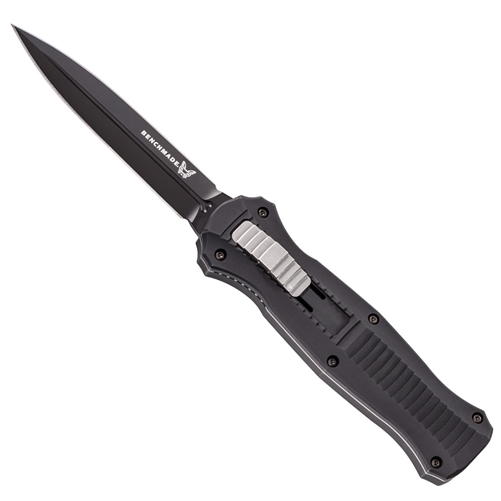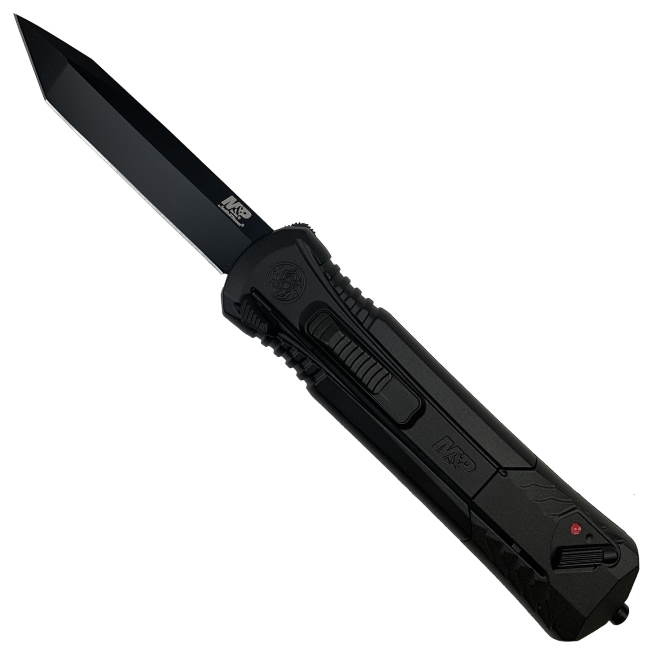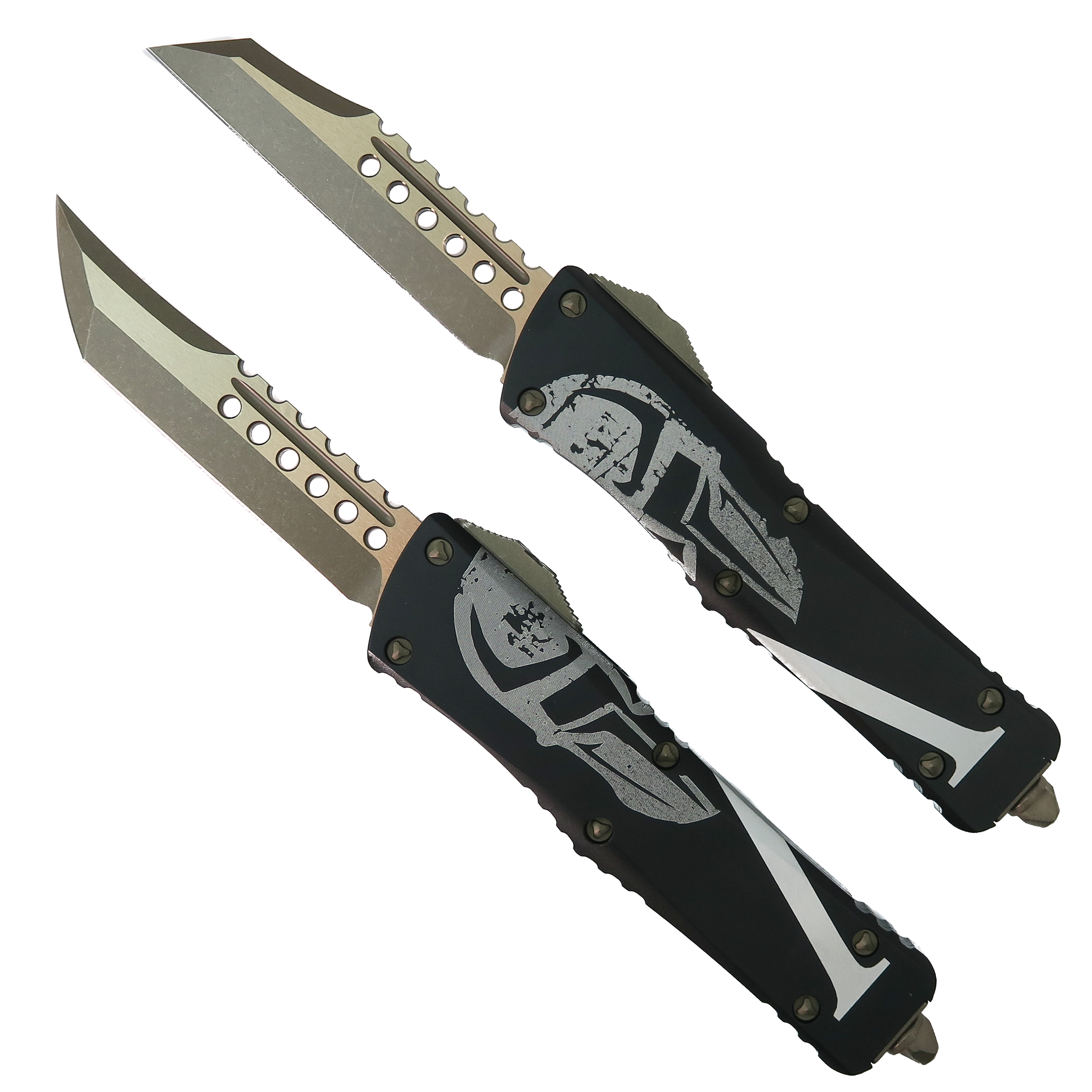How Does an OTF Knife Work?
Posted by PT on Jul 20th 2023
The Ingenious Mechanism: Understanding How an OTF Knife Works
Introduction:
When it comes to the vast world of knives, Out-The-Front (OTF) knives hold a unique and captivating place. As suggested by its name, this distinctive type of knife features a blade that deploys 'out the front' of the handle at the push of a button. Admired for their ease of use, swift deployment, and innovative design, OTF knives have gained significant popularity among knife enthusiasts, collectors, and even in specific professional fields.
Despite their ubiquity, have you ever wondered what lies beneath their intriguing mechanism? How does a blade retreat and extend with such smoothness and precision? This article aims to demystify the fascinating world of OTF knives, exploring their types, anatomy, operational mechanism, practical applications, and legal considerations. Join us as we delve into the intricacies of how an OTF knife works, shedding light on the genius behind its simple yet sophisticated design.
Overview of OTF Knives: Types and Features
To fully appreciate the mechanics of an OTF knife, we must first understand its types and their unique features. Generally, OTF knives fall into two categories: Single Action (SA-OTF) and Double Action (DA-OTF).
In a Single Action OTF knife, the blade deployment is powered by a spring mechanism. However, retracting the blade back into the handle requires manual operation, usually utilizing a lever or a button. In contrast, a Double Action OTF knife employs a spring mechanism for deploying and retracting the blade, making it significantly more versatile and efficient.
Regardless of their type, OTF knives share a few key characteristics. They are compact, convenient to carry and provide rapid, one-handed blade deployment, making them highly valued for a wide range of applications.
Anatomy of an OTF Knife
To comprehend the operation of an OTF knife, we need to familiarize ourselves with its key components. Here is the basic anatomy:
- Blade: This is the cutting part of the knife, which is stored inside the handle when not in use. The shape and materials can vary based on the intended usage of the knife.
- Handle: This houses the blade when retracted and contains the complex mechanism that enables the blade to deploy and retract.
- Slider Button: This button, typically located on the side of the handle, controls the movement of the blade in both SA-OTF and DA-OTF knives.
- Spring Mechanism: Hidden inside the handle, the spring is the powerhouse of the knife. It provides the force necessary to propel the blade out and (in the case of DA-OTFs) pull it back into the handle.
- Locking Latch: This component locks the blade when fully deployed or retracted, ensuring user safety and smooth operation.
The harmonious collaboration of these components gives birth to the seamless performance of an OTF knife. The following section will investigate how these parts operate an OTF knife.
The Mechanism of an OTF Knife: Step-by-Step Operation
Having established the fundamental anatomy of an OTF knife, it's time to understand how these parts work in unison to provide swift and smooth blade action.
Single Action OTF Knife Operation:
- Deploying the Blade: The spring mechanism is activated upon pressing the slider button. The stored tension in the spring is released, propelling the blade out of the handle and into the locked position.
- Retracting the Blade: Unlike automatic deployment, retracting the blade in a SA-OTF requires manual intervention. This is typically done by pulling a lever or switch on the handle, which pulls the blade back into the handle and locks it in place.
Double Action OTF Knife Operation:
- Deploying the Blade: Like the SA-OTF, when the slider button is pushed forward, the spring's tension is released, sending the blade out of the handle and into its extended position. Once fully extended, the blade is locked in place.
- Retracting the Blade: What sets DA-OTFs apart is their automatic retraction. Pulling the slider button back again activates the spring mechanism, but this time in reverse. The blade is pulled back into the handle and locked in the retracted position.
The spring action at the heart of these processes gives OTF knives their name and charm. When deployed, the spring releases its tension to mimic the natural motion of opening a traditional pocket knife but with far greater speed and convenience.
This brief overview simplifies a somewhat complex process, and variations exist between different makes and models of OTF knives. Yet, the basic principle of stored and released tension driving the blade remains consistent, demonstrating the sheer ingenuity of OTF knife design.
Most Popular Brands of OTF Knives
While there are many brands in the market that sell OTF knives, some have set themselves apart due to their commitment to quality, innovation, and design. Here are five companies known for their outstanding OTF knives.
1.Microtech: Established in 1994, Microtech has been a leading force in the world of OTF knives. Renowned for their high-quality materials and rigorous quality control, Microtech offers a range of OTF models, including the popular Ultratech and Troodon lines.
2.Benchmade: This Oregon-based company has a reputation for crafting some of the most reliable OTF knives on the market. Their Infidel and Pagan series are known for robust construction and excellent performance, showcasing Benchmade's commitment to quality.
3.Protech: Known for their superior craftsmanship and attention to detail, Protech offers a selection of OTF knives that are both stylish and functional. Their Dark Angel series, in particular, has gained widespread recognition for its elegance and efficiency.
4.Smith & Wesson: Smith & Wesson mostly makes single action OTF knives in the affordable range.
5.Hogue: Renowned for their firearm accessories and tools, Hogue also produces a commendable range of OTF knives. Known for their durability and ergonomics, Hogue's OTF offerings, such as the Compound series, are recognized for their unique combination of form and function.
Each of these brands offers a unique approach to the design and manufacture of OTF knives, making them popular choices for both novices and seasoned knife enthusiasts alike. Remember, choosing a brand should align with your specific needs, preferences, and budget.
The Practical Applications and Legal Considerations of OTF Knives
OTF knives, with their quick, one-handed operation and compact size, find use in various situations. They are particularly favored in tasks requiring speed and efficiency, like emergency services, military operations, and even everyday tasks such as opening packages. Their safety-lock mechanism reduces the risk of accidental deployment, making them suitable for carrying in a pocket or bag.
However, it's important to remember that these knives, like any tool, must be used responsibly. Furthermore, their legality varies widely, with some regions having strict regulations on carrying and usage. These laws can depend on factors like blade length, the mechanism of deployment, and even the specific purpose for carrying the knife. Therefore, before purchasing or carrying an OTF knife, it's crucial to understand the local laws and regulations.
In our next and final section, we'll recap our journey into the world of OTF knives and reflect on the fascinating complexity hidden within their sleek, compact designs.
Conclusion:
As we wrap up our exploration into the fascinating world of OTF knives, we now understand the innovation and complex mechanics underlying their sleek exteriors. From identifying the types of OTF knives to deconstructing their anatomy and comprehending the function of each component, we've dissected the method behind these popular knives' swift and smooth operation.
While the convenience and efficiency of OTF knives are commendable, the importance of responsible handling cannot be overstated. Awareness of local laws and regulations surrounding these tools is as critical as understanding their mechanics. So, whether you're an outdoor enthusiast, a professional requiring a reliable tool, or a knife aficionado, remember that the mastery of OTF knives goes beyond their use—it encompasses knowledge, responsibility, and respect for the tool.
References:




